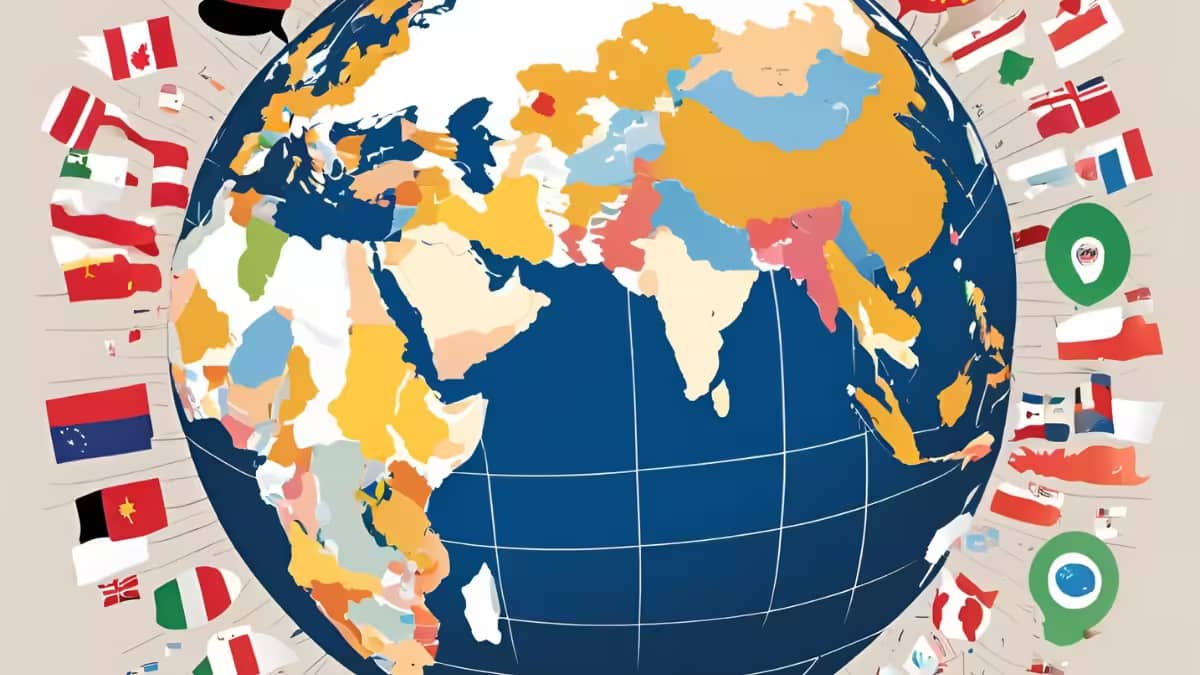Traveling to a new country is always an exciting adventure, filled with new experiences, cultures, and, of course, languages. While it’s thrilling to immerse yourself in a foreign environment, the language barrier can sometimes feel intimidating. However, that shouldn’t hold you back from discovering all that the world has to offer! With a little preparation and some practical tips, you can confidently communicate and connect with locals, even if you don’t speak the language.
In this guide, we’ll share actionable tips and strategies to help you overcome language barriers during your travels, making your journey smoother and more enjoyable.
1. Learn Key Phrases Before You Go
Before you set foot in a new country, take some time to learn a few basic phrases in the local language. Simple greetings, polite expressions, and essential questions can go a long way in making a positive impression and getting what you need. Consider learning these key phrases to help you navigate common situations:
- Hello/Goodbye
- Please/Thank you
- Yes/No
- Do you speak English?
- Where is…? (e.g., the bathroom, hotel, restaurant)
- How much does this cost?
- I need help.
There are many resources available to help you with this, from language apps like Duolingo and Babbel to YouTube tutorials. Even if your pronunciation isn’t perfect, locals will appreciate the effort, and it often opens doors to more friendly and helpful interactions.
2. Use Translation Apps
Technology has made traveling easier than ever, especially when it comes to breaking down language barriers. Translation apps are a traveler’s best friend, allowing you to translate text, speech, and even images instantly. Here are some popular options:
- Google Translate: This app supports over 100 languages and can translate text, speech, and even live camera images (useful for translating signs or menus). It also works offline if you download the language packs in advance.
- iTranslate: Another great option, iTranslate offers voice recognition and translation in over 100 languages. It also has a built-in dictionary, which is handy for understanding word nuances.
- Papago: Ideal for Asian languages, Papago excels in translating between Korean, Japanese, Chinese, and other languages in the region.
When using these apps, try to speak slowly and clearly. Also, remember that while translation technology is incredibly helpful, it’s not perfect. Simple sentences are more likely to be translated accurately, so avoid complex phrases when possible.
Non-verbal communication is Key
When language falls short, non-verbal cues can be the key to understanding. Body language, facial expressions, and gestures are universal tools that can help you convey your message. For instance, nodding or shaking your head can communicate yes or no, while pointing can direct attention to what you’re talking about.
However, it’s important to remember that non-verbal communication isn’t the same everywhere. Different cultures can interpret the same gestures in vastly different ways. What might be a friendly or neutral gesture in your home country could be confusing or even offensive in another.
For example, in many Western countries, making eye contact is seen as a sign of confidence and honesty. However, in some Asian cultures, too much direct eye contact can be considered impolite or confrontational. Similarly, while a thumbs-up gesture might mean “good job” or “okay” in most Western cultures, it can be offensive in parts of the Middle East and South America.
To navigate these cultural differences effectively, it’s a good idea to do a bit of research before you travel. Look up the common non-verbal cues in the country you’re visiting—things like how people greet each other, whether they shake hands or bow, and what gestures to avoid.
If you find yourself unsure about the appropriate non-verbal behavior in a particular situation, observing the locals can be incredibly helpful. Pay attention to how they interact with each other and try to mimic those behaviors. This way, you’re more likely to blend in and communicate respect through your actions.
Ultimately, being mindful of cultural differences in non-verbal communication can help you connect more genuinely with the people you meet on your travels. It shows that you respect their culture and are making an effort to engage on their terms, which can lead to more meaningful and positive interactions.
4. Carry a Phrasebook or Download Offline Resources
While apps are convenient, they’re not always reliable in areas with poor internet connectivity. Having a physical phrasebook or offline language resource can be invaluable. Many guidebooks offer phrase sections tailored to travelers, covering everything from ordering food to asking for directions.
There are also downloadable PDF guides available online that you can keep on your phone or tablet for easy access. These can be particularly useful in emergencies when your phone’s battery is low or when you’re in a remote area with no service.
5. Use Visual Aids and Props
Sometimes, showing is easier than telling. Visual aids, like pictures or maps, can be incredibly useful when trying to communicate across language barriers. For instance, if you’re asking for directions, showing a picture of your destination or a map can help clarify where you want to go.
If you’re trying to describe something, photos on your phone or drawings (no matter how rudimentary) can help get your point across. For food-related questions, showing a picture of the dish you want to try or an ingredient you’re allergic to can make your dining experience smoother and safer.
6. Practice Patience and Maintain a Positive Attitude
Traveling in a country where you don’t speak the language can sometimes be frustrating, but patience is key. Remember that communication is a two-way street, and the locals you’re interacting with might also feel nervous about communicating in a foreign language.
Keep a positive attitude, smile, and don’t be afraid to laugh at yourself if things don’t go perfectly. A little humor can defuse tension and turn a potentially frustrating interaction into a memorable experience. Most importantly, don’t give up—persistence often pays off.
7. Engage with Locals in Non-Verbal Ways
Engaging with locals isn’t just about talking; it’s also about participating in local customs and activities. Sharing a meal, attending a local event, or participating in a cultural activity can create meaningful connections without the need for many words.
These experiences can often convey a sense of respect and appreciation for the local culture, making your interactions with the community more genuine and fulfilling. Plus, these non-verbal connections can often lead to learning new words and phrases in a natural, immersive way.
8. Join a Local Tour or Hire a Guide
If you’re in a place where language barriers seem particularly challenging, consider joining a local tour or hiring a guide who speaks your language. Not only will this ease communication, but it will also enhance your understanding of the local culture and history.
Guides can act as intermediaries, helping you navigate tricky situations and translating your questions or needs to the locals. This is especially helpful in regions where English is not commonly spoken.
9. Enroll in a Language Class
If you’re planning an extended stay or frequent visits to a particular country, consider taking a language class. Even a few weeks of lessons can give you a strong foundation to build on, making your interactions more meaningful and your travel experience more immersive.
Language schools often offer short-term courses for travelers, focusing on conversational skills that are directly applicable to everyday situations. Plus, learning the language shows a deep respect for the local culture, which is always appreciated.
10. Don’t Be Afraid to Ask for Help
Finally, remember that most people are happy to help a traveler in need. If you’re stuck, don’t hesitate to ask for help, whether from locals, fellow travelers, or even staff at your hotel or hostel. Use a combination of the tips above—such as key phrases, translation apps, and non-verbal communication—to explain your situation.
You might be surprised by how far a little effort can go in overcoming language barriers. Often, locals appreciate that you’re trying to connect with their culture, and they’ll go out of their way to assist you.
Conclusion
Navigating language barriers while traveling doesn’t have to be a daunting task. With the right tools, a bit of preparation, and a positive mindset, you can communicate effectively in any country you visit. Embrace the challenge as part of the adventure, and you’ll find that these experiences often lead to some of the most memorable and rewarding moments of your journey.



Leave a Reply